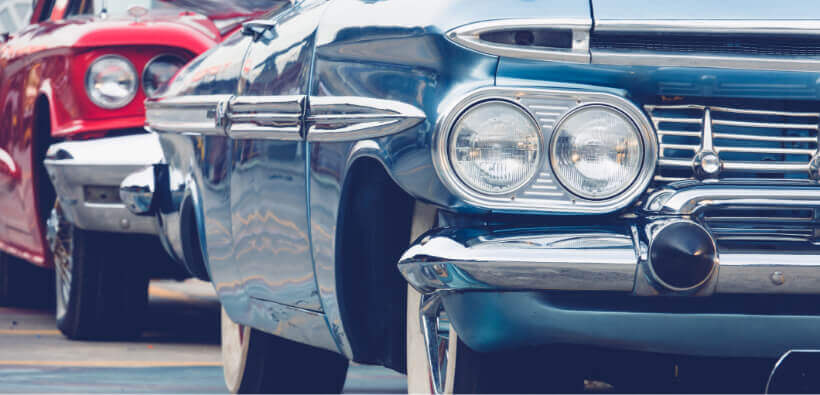Your Classic Car – Do You Have the Right Insurance?

When it comes to insuring a classic car, most car insurance companies don’t give it the value it deserves. That’s why you need to make the correct choice when insuring your prized possession. And, if you make the wrong one, in the event your classic gets totaled or stolen, you could be left with a great deal less than the car is actually worth.
Here’s the problem – most insurance companies treat classic cars as though they were daily drivers and judge replacement value on information that, in many cases, is not accurate. There is no Kelly Blue Book or Edmunds for a 1969 Corvette Stingray convertible with a 427 cubic-inch engine and a ton of options. Without pictures to show condition and an appraisal value, your auto insurance company isn’t going to give you anywhere near the $35,000 to $65,000 you feel you could get on the open market.
The first thing to know is – there are three distinctive value classifications to consider when insuring a classic car:
1. Actual Cash Value – This is pretty much the standard way insurance companies calculate the value of a car. Your classic car can be treated as a daily driver, which means its value is based on replacement costs minus depreciation.
2. Stated Value – While stated value is a step above actual cash value, it is still lacking the protection you’re seeking for your classic car. The reason for this is it goes by a specified value in the contract. As with actual cash value, it has a drawback. Should the car be totaled or stolen, the insurance company may not guarantee to pay up to the full-stated replacement value of the car. Stay away from this one, as well.
3. Agreed Value – Because classic car insurance is designed for your specific vehicle only, this is the choice you want to go with. Agreed value is determined by the appraised value or true estimated value of your classic car on which you and the insurance company can agree. Once a set replacement value is established, you sign a contract and pay your premiums according to the price both parties agreed upon. Then, if the car is totaled or stolen, they’ll reimburse you for the full value.
Keep in mind, most classic car insurance companies have a few conditions to qualify for insurance:
- A clean driving record
- At least 10 years of driving experience
- Proof you have another means of transportation
- Very limited/low annual mileage
- No teenage drivers
- Proof of secured/enclosed storage (garage, etc.)
Also, your classic car insurer expects you to stick to the ground rules he has laid down for you as stipulation for coverage, so be sure to follow them to avoid any problems should you have a claim. Mileage limits are fairly low, but they are for you and your car’s safety. After all, they know the more you drive, the more risk you’re taking. And keep your 16- year old teen driver away from your ride so you can avoid having to get high-risk auto insurance – classic car insurers simply will say “no”.
If your classic is in need of some restoration and the agreed value is in line with the car’s condition, notify your insurance company when the work begins and as soon as it’s completed, so you can upgrade the policy to the new increased value of the car. Shop before you purchase collector or classic car insurance, as insurers vary on stipulations from company to company. Should you buy a classic car, get it insured immediately.
In the end, choosing a classic car insurance company, of which there several excellent ones, will give you peace of mind knowing your baby is covered for its real value…and all for less than you think.
The family car may not be a classic…but, you can still check that you’re getting the best rate on your car insurance. Why not get a free car insurance quote today?


